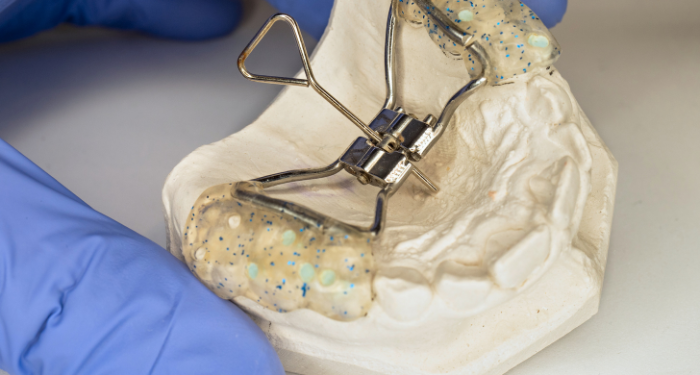
You’ve seen it: the kiddo in class with their mouth hanging open… the child who snores so loudly you can hear them from the other room… or the little one who always seems “stuffed up.”
Parents (and sometimes even professionals) may shrug it off as “cute” or “just allergies.”
But here’s the truth: mouth breathing is never just a phase.
What is mouth breathing?
Mouth breathing simply means a child habitually breathes through their mouth instead of their nose.
It might sound harmless—after all, at least they’re breathing, right?—but it’s actually a red flag that the airway, oral muscles, and/or nasal passages aren’t working as they should.
Causes can include enlarged tonsils, adenoids, nasal obstruction, or even a deviated septum. (If you suspect this, a referral to a specialist is important. This is why having a team of professionals who understand the airway world makes such a difference!)
Left unaddressed, mouth breathing can disrupt growth, development, sleep, and overall health.
Why does it matter?
Here’s why we pay attention: mouth breathing doesn’t just change how a child looks when sitting at rest—it ripples into many areas of daily life:
- Feeding: messy eating, open-mouth chewing, picky eating
- Sleep: snoring, restless nights, bedwetting, daytime fatigue
- Behavior: poor focus, irritability, “ADHD-like” symptoms
- Dentofacial Growth: long face, narrow palate, crowded teeth, forward head posture
How do we assess?
In practice, we look at oral rest posture, airway health, facial growth, and oral habits.
At home, parents can notice simple signs. (No need to overanalyze—just look for patterns that happen consistently, not one-off moments.)
Some red flags include:
- Lips apart most of the day
- Snoring or noisy breathing at night
- Head tipped back or restless sleep
- Drooling beyond toddler years
- Chapped lips from constant airflow
What does treatment look like?
The good news? Mouth breathing is treatable.
The best outcomes happen when providers work together. A typical pathway may include:
- Identify the cause: Is it structural (tonsils/adenoids), functional (oral muscles), or both?
- Address airway health: Referral to ENT, allergist, or sleep specialist if indicated.
- Myofunctional therapy: Exercises to retrain orofacial muscles and encourage nasal breathing.
- Co-treatment: Collaboration with dentist/orthodontist for expansion, SLP/OT for feeding/speech/oral rest posture, and medical providers for airway management.
- Integration: Building healthy new habits into daily life (nasal breathing, lips closed, tongue up).
When should we refer?
Refer or screen if you notice:
- Chronic open-mouth posture
- Snoring, restless sleep, or apnea symptoms
- Constant congestion without clear illness
- Long face or narrow palate developing
- Speech or feeding issues paired with mouth breathing
Myths vs. Facts
Myth: Kids outgrow mouth breathing.
Fact: Without intervention, it often worsens as they grow.
Myth: If they can breathe through their nose sometimes, it’s fine.
Fact: Habitual patterns matter more than occasional ability.
Myth: Mouth breathing only affects teeth.
Fact: It impacts sleep, behavior, posture, and overall health.
FAQ
Q: Is mouth breathing always caused by big tonsils or adenoids?
A: Not always. Airway obstruction is common, but muscle weakness, oral habits, or chronic congestion can also play a role.
Q: Can mouth breathing cause crooked teeth?
A: Yes. The tongue shapes the palate and dental arch. Without proper tongue-to-palate contact, teeth can crowd and the palate can narrow.
Q: My child only mouth breathes at night. Should I be worried?
A: Yes. Sleep-disordered breathing affects oxygen, brain development, and behavior. Nighttime symptoms are just as important—if not more—than daytime ones.
Q: Is mouth breathing treatable?
A: Absolutely. With the right team—including ENT, dental/ortho, and myofunctional therapy—kids can transition to nasal breathing and thrive.
Ready for support?
If you’re a professional working with children who mouth breathe, you don’t have to figure this out alone.
Inside The Myo Membership® (best for ages 5+) and The Pediatric Feeding Hub™ (best for infants & toddlers), you’ll get:
- Live mentorship from experienced clinicians
- Access to HallieAI for on-demand case support
- Practical strategies you can use immediately in your sessions
These aren’t “one-size-fits-all” memberships. They’re built to give you confidence in screening, referring, and supporting every child who walks through your door.


